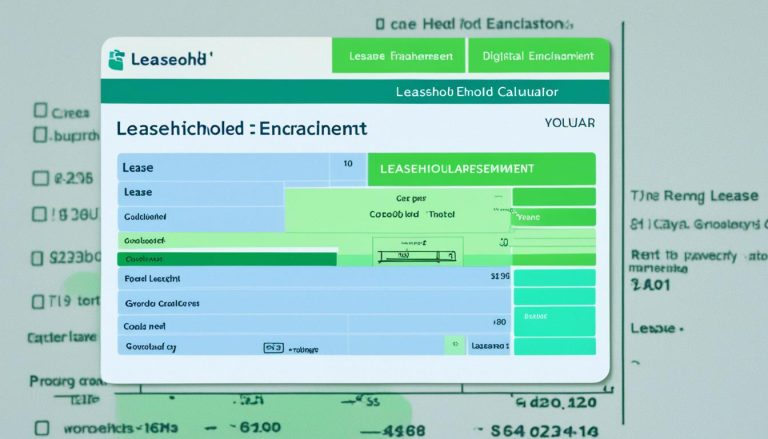Leasing is a common financial strategy for businesses looking to acquire assets without the burden of full ownership. Whether it’s equipment, vehicles, or property, leasing provides flexibility while preserving cash flow.
However, not all leases are the same. The two primary types—finance leases and operating leases—have distinct financial and accounting implications.
Understanding the key differences between these lease types is crucial for businesses making long-term financial decisions. This guide explores how finance and operating leases work, their advantages and disadvantages, and how to choose the right option for your business.
What Is a Finance Lease and How Does It Work?

A finance lease, also known as a capital lease, is a long-term lease arrangement where the lessee assumes most of the risks and rewards associated with asset ownership.
Although the legal ownership remains with the lessor, the lessee treats the leased asset as their own for accounting and financial reporting purposes.
Key Characteristics of a Finance Lease:
- The lease term typically covers most of the asset’s useful life.
- The lessee is responsible for maintenance, insurance, and other related costs.
- Lease payments are structured to cover the full cost of the asset over time.
- The lessee may have an option to purchase the asset at the end of the lease term, often at a nominal price.
Common Use Cases of Finance Leases:
- Businesses acquiring high-value machinery, equipment, or vehicles for long-term use.
- Companies looking to spread the cost of acquiring assets without making a large upfront payment.
- Organisations needing tax benefits and depreciation advantages associated with asset ownership.
What Is an Operating Lease and How Does It Work?
An operating lease is a short-term leasing arrangement where the lessor retains ownership of the asset and remains responsible for its maintenance and upkeep. Unlike a finance lease, an operating lease does not transfer the risks and rewards of ownership to the lessee.
Key Characteristics of an Operating Lease:
- The lease term is shorter than the asset’s useful life.
- The lessor is responsible for maintenance, insurance, and repairs.
- Lease payments are treated as operational expenses rather than capital expenditures.
- The asset is returned to the lessor at the end of the lease term, with no purchase option for the lessee.
Common Use Cases of Operating Leases:
- Businesses that require equipment or vehicles for short-term use.
- Companies that frequently upgrade their assets, such as technology or office equipment.
- Organisations seeking flexible leasing options with minimal long-term commitments.
What Are the Key Differences Between a Finance Lease and an Operating Lease?

Finance leases and operating leases serve different purposes in business finance and accounting. While both allow businesses to use assets without purchasing them outright, they differ in terms of ownership rights, financial obligations, tax treatment, and flexibility.
Understanding these key differences is essential for businesses to determine which lease structure best suits their financial and operational needs.
1. Ownership and Control
- Finance Lease: The lessee assumes most of the risks and rewards associated with the asset, meaning they effectively control and use the asset as if they own it. However, legal ownership remains with the lessor until the lease term ends, at which point the lessee often has an option to purchase the asset at a nominal price.
- Operating Lease: The lessor retains full ownership and control of the asset. The lessee only has the right to use the asset for the lease period but must return it once the lease term ends. The lessor is responsible for any maintenance and repairs.
2. Lease Term Duration
- Finance Lease: Typically structured for long-term use, the lease term often extends for most or all of the asset’s useful life. The duration is usually non-cancellable, meaning the lessee is committed to the lease until the term ends.
- Operating Lease: The lease term is shorter than the asset’s useful life, allowing businesses to use the asset temporarily without a long-term commitment. This is ideal for companies that need the latest equipment or vehicles but do not want to purchase them outright.
3. Accounting Treatment
- Finance Lease: Under IFRS 16, finance leases are recorded on the lessee’s balance sheet as both an asset (right-of-use asset) and a liability (lease liability). The lessee must account for depreciation and interest expenses over the lease term.
- Operating Lease: Previously, operating leases were treated as off-balance-sheet transactions, meaning they were not recorded as liabilities. However, with the implementation of IFRS 16, most operating leases now appear on the balance sheet, affecting financial ratios and reporting.
4. Financial Implications
- Finance Lease: The lessee is responsible for all financial costs associated with the asset, including depreciation, insurance, and maintenance. Since the asset is recorded on the balance sheet, it increases both assets and liabilities, which can affect financial ratios such as debt-to-equity and return on assets.
- Operating Lease: Since the lease payments are considered operating expenses, they are deducted from the income statement, reducing taxable profits. Businesses do not assume the risks of asset ownership, such as depreciation or obsolescence.
5. Cost and Payment Structure
- Finance Lease: The lease payments are typically structured to cover the entire cost of the asset, plus interest. Payments tend to be higher compared to operating leases, but they contribute towards ownership by the end of the lease.
- Operating Lease: Payments are generally lower and treated as rental expenses, providing businesses with financial flexibility. Since there is no purchase option, the total cost of using the asset over time may be higher than purchasing it outright.
6. Maintenance and Insurance Responsibility
- Finance Lease: The lessee is responsible for all maintenance, repairs, and insurance of the asset, similar to owning it outright. This adds additional operational costs to the business.
- Operating Lease: The lessor typically manages maintenance and insurance, reducing the administrative and financial burden on the lessee. This is beneficial for businesses that do not want to deal with asset upkeep.
7. Tax Treatment
- Finance Lease: Lease payments are divided into depreciation and interest components, both of which can be tax-deductible. The business can also claim capital allowances, providing additional tax benefits.
- Operating Lease: Lease payments are fully deductible as operating expenses, reducing taxable income. However, there are no capital allowances or depreciation benefits for the lessee.
8. End-of-Lease Options
- Finance Lease: At the end of the lease, the lessee typically has the option to purchase the asset at a significantly reduced price. Some finance leases also allow for lease renewal at a lower rate.
- Operating Lease: The lessee does not have an option to purchase the asset at the end of the lease. Instead, they must return it to the lessor, often with the possibility of upgrading to a newer model.
Comparison Table: Finance Lease vs Operating Lease
| Feature | Finance Lease | Operating Lease |
| Ownership | Lessee assumes risks and rewards | Lessor retains ownership |
| Lease Term | Covers most of the asset’s lifespan | Shorter than asset’s lifespan |
| Accounting Treatment | Recorded as an asset and liability | Treated as an expense |
| Maintenance | Lessee is responsible | Lessor is responsible |
| Cost Structure | Higher payments, contribute to ownership | Lower payments, purely rental |
| Tax Benefits | Depreciation & interest deductible | Lease payments fully deductible |
| End-of-Lease Option | Purchase option often available | No ownership option, asset is returned |
How Do Finance and Operating Leases Impact a Company’s Financial Statements?
Balance Sheet Impact:
- A finance lease appears as both an asset and a liability, affecting financial ratios such as debt-to-equity.
- An operating lease is not recorded as a liability on the balance sheet under previous standards but must be accounted for under IFRS 16.
Income Statement Impact:
- Finance lease payments are split between depreciation and interest expenses.
- Operating lease payments are treated as business expenses, reducing taxable income.
Cash Flow Considerations:
- Finance leases involve higher initial cash outflows due to upfront costs and interest payments.
- Operating leases provide a predictable expense structure, benefiting short-term cash flow management.
Which Type of Lease Is More Beneficial for Businesses?

The choice between a finance lease and an operating lease depends on the business’s financial strategy, asset usage needs, and tax considerations.
When to Choose a Finance Lease:
- When the business needs long-term use of the asset.
- When asset ownership provides tax or financial benefits.
- When depreciation advantages align with financial planning.
When to Choose an Operating Lease:
- When flexibility and lower upfront costs are priorities.
- When the business requires frequent equipment upgrades.
- When avoiding long-term liabilities is essential for financial reporting.
How Do Lease Agreements Affect Cash Flow and Taxation?
Cash Flow Management:
- Finance leases can impact liquidity due to higher monthly obligations.
- Operating leases ensure stable, predictable expenses, making cash flow management easier.
Tax Treatment:
- Finance lease payments are split into depreciation and interest for tax purposes.
- Operating lease payments are fully deductible as operating expenses, reducing taxable income.
What Are the Pros and Cons of Finance Leases and Operating Leases?
Advantages of Finance Leases:
- Asset ownership benefits without an outright purchase.
- Potential tax savings through depreciation.
- Predictable fixed payments for long-term budgeting.
Disadvantages of Finance Leases:
- Higher financial commitment and liability on the balance sheet.
- The lessee is responsible for maintenance and insurance.
- Lease obligations can impact borrowing capacity.
Advantages of Operating Leases:
- No long-term financial commitment.
- Lower initial costs and no depreciation risks.
- Flexibility to upgrade or return the asset at lease end.
Disadvantages of Operating Leases:
- Higher cumulative costs over time.
- No asset ownership benefits.
- Limited control over modifications or customisation.
How Has IFRS 16 Changed Lease Accounting?
Under IFRS 16, the accounting treatment of leases has changed significantly:
- Most operating leases now appear on the balance sheet, eliminating off-balance-sheet financing.
- Companies must recognise both an asset (right-of-use asset) and a lease liability.
- Financial ratios, such as debt-to-equity, may be affected, influencing borrowing decisions.
- Businesses need to reassess leasing strategies to align with new compliance requirements.
How to Decide Which Lease Option Is Best for Your Business?

Choosing between a finance lease and an operating lease requires careful consideration of financial goals, asset requirements, and tax implications.
Key Factors to Consider:
- Asset Usage: If the asset will be used for most of its lifespan, a finance lease may be preferable.
- Financial Position: Businesses with strong cash flow may benefit from finance leases, while those with limited liquidity may find operating leases more suitable.
- Tax Planning: Understanding the tax implications of lease payments can influence the decision.
- Flexibility Needs: If the business requires frequent asset upgrades, an operating lease may be more advantageous.
Consulting with financial advisors or accountants can help businesses make an informed leasing decision that aligns with their financial and operational objectives.
Conclusion
Finance and operating leases serve different purposes, impacting business finances in distinct ways.
Finance leases provide asset ownership benefits and long-term cost savings, while operating leases offer flexibility and lower short-term financial commitments. Understanding these differences helps businesses align their leasing choices with financial objectives and operational needs.
FAQs
What is the main difference between a finance lease and an operating lease?
A finance lease involves long-term asset use with ownership-like benefits, while an operating lease is a short-term rental arrangement where the lessor retains ownership.
How does IFRS 16 impact operating leases?
IFRS 16 requires businesses to record most operating leases on the balance sheet, increasing reported liabilities and affecting financial ratios.
Can lease payments be tax-deductible?
Yes. Finance lease payments are split into interest and depreciation for tax purposes, while operating lease payments are fully deductible as business expenses.
When should a business choose a finance lease?
A finance lease is ideal when a business plans to use the asset long-term and wants the benefits of ownership without an outright purchase.
Are operating leases better for cash flow management?
Yes, operating leases typically involve lower upfront costs and predictable payments, making them beneficial for managing cash flow efficiently.
What types of assets are commonly leased under finance leases?
Finance leases are commonly used for vehicles, heavy machinery, and equipment that businesses plan to use for an extended period.
Does a finance lease always include a purchase option?
Not always, but many finance leases provide an option to buy the asset at the end of the lease term.






